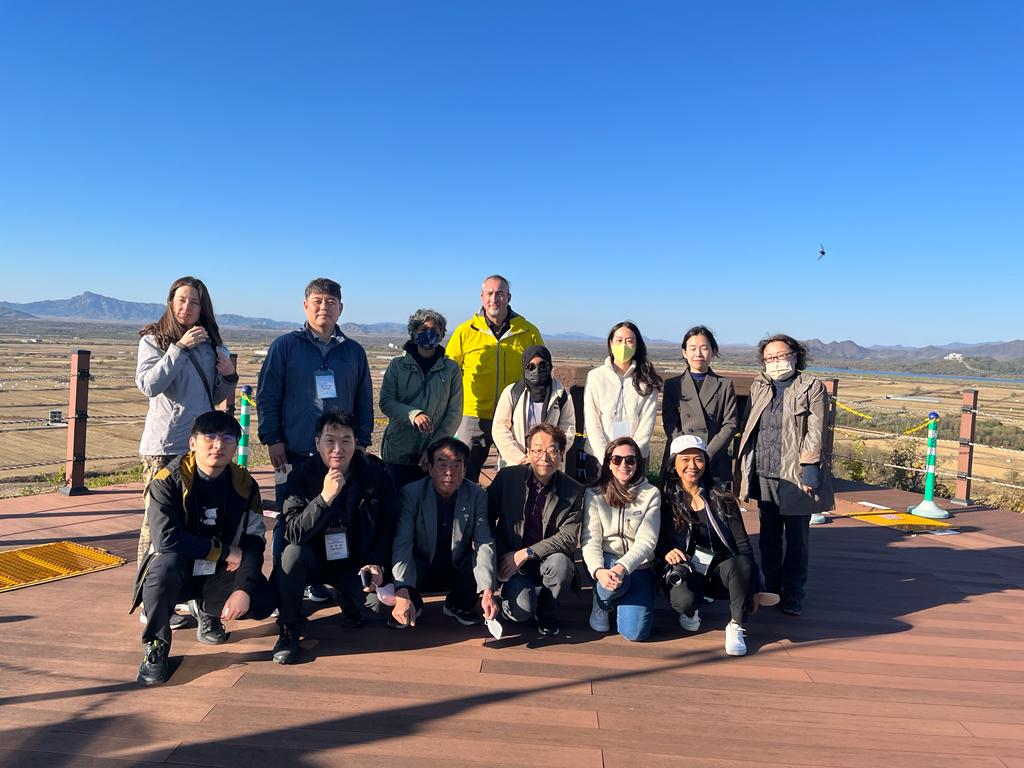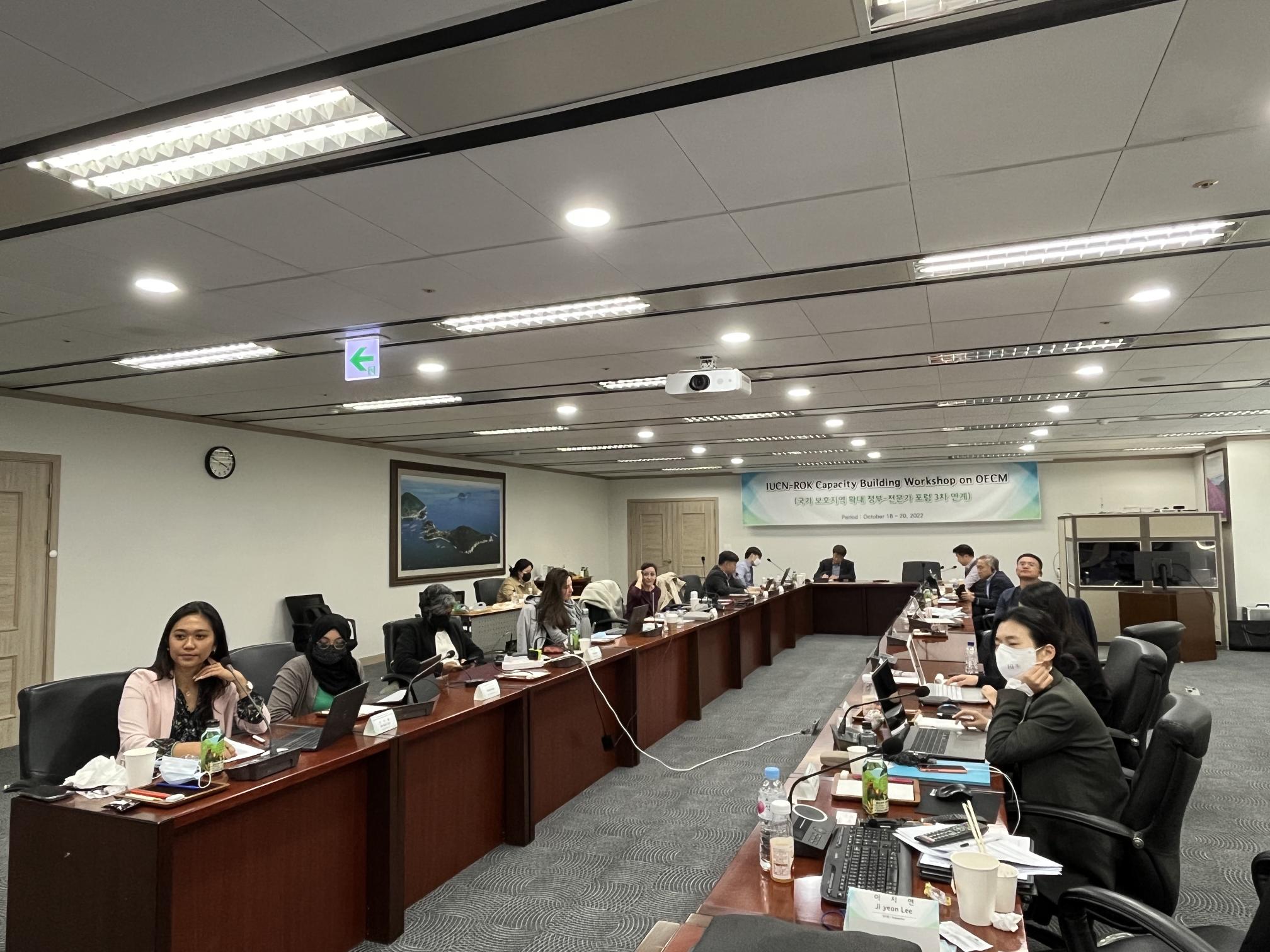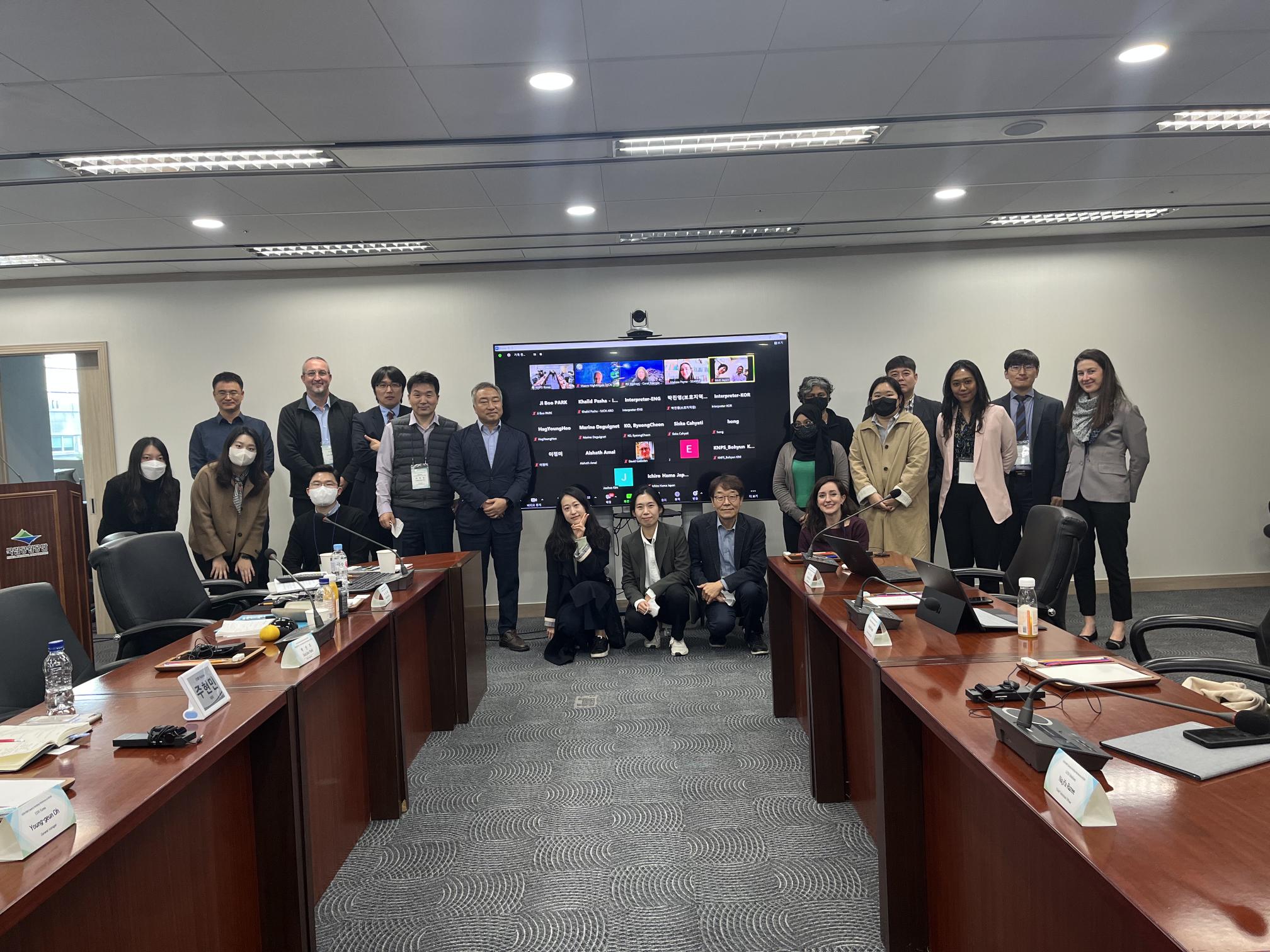Nature, culture and community commitment to effective area-based conservation – recognising what is an ‘OECM’ in Korea
In Cheorwon, in the far north of South Korea, close to the demilitarised zone (DMZ), lies the remarkable ‘Rice Paddy for Cranes’ community conserved area. This patchwork of wetland and paddy fields sits within a mosaic of both production and wild landscapes. This area hosts and feeds critical habitat for populations of white-naped and red-crowned cranes, migratory species that are both on the IUCN Red List, vulnerable respectively.
Rising rice, thriving cranes!
The traditional rice paddy is critical to accommodate migratory cranes and provide food for cranes during their transit, particularly in winter. It conserves nature effectively but is not a formal protected area. Rather it has been conserved by Cheorwon Crane Protection Association commissioned by the National Nature Trust, notably by Cheorwon local Mr Baek Jong-han, who works tirelessly to protect cranes. Mr Baek has been observing these cranes for more than 30 years.
“I have observed these cranes daily, and it is a delight to see their numbers stabilise and increase. They are regular visitors; this is their haven".
The National Nature Trust purchased this site through the financial support of Lam Research Korea and managed it as trust assets. And Korea National Parks Service(KNPS) is supposed to provide conservation technical advice and guidance, as an institution specializing in the management of protected areas. “For KNPS, we are so pleased to support such dedicated local actors to help them achieve effective conservation of the crane and share in the success for their own values and benefits”, Dr Heo Hag Young mentioned.
The rice paddy for cranes is clearly demonstrating effective conservation for important local and national species values, also globally listed by IUCN. The site is now a candidate site that can be considered as an “other effective area-based conservation measure” or OECM.
 KNPS and IUCN teams from the crane observation deck in Cheorwon county
Photo: Siska-Martina Cahayati, IUCN
KNPS and IUCN teams from the crane observation deck in Cheorwon county
Photo: Siska-Martina Cahayati, IUCN
During October 2022, a team of Korean and international experts used the IUCN WCPA OECM screening tool to examine the core values, including the high biodiversity values and key elements of the site. The rice paddy is and has been governed and managed in a way that secures these natural values whilst also recognising and assuring other locally relevant values in and around the site, such as farming, eco-tourism and ecosystem services that support local farmers and residents. The local communities see great value in conserving the habitats for the cranes and have created innovative conservation contracts to achieve these outcomes. The area falls under the National Trust Act, which allows for a clear legal basis for the long-term effectiveness and monitoring of the site.
The site will also advance through the IUCN Green List assessment, making it one of the world’s first Green Listed OECMs. The IUCN Green List Standard, which describes the elements of effective and equitable protected and conserved areas globally will further recognise and support the rice paddy for cranes. Chairman of the Korea Protected Areas Forum, Professor Hong Seok-hwan, also a member of the Korean EAGL remarked “The IUCN Green List describes effectiveness and equally applies to these OECM sites. We can use the standard to help keep the focus on effectiveness, that is the most important requirement.”.
The field visit was complemented by a joint KNPS and IUCN-hosted national dialogue held in Seoul to discuss and plan for a long-term roadmap on OECMs in South Korea, in partnership with the IUCN Green List programme of work. The national dialogue brought together conservation experts, adjacent sectors and is the first such meeting to discuss OECMs under the joint project IUCN - Ministry of Environment of Republic of Korea partnership framework. The meeting was also attended by participants from across the region, including Japan, Maldives, Indonesia and Malaysia, all of whom presented their OECM progress, both in terms of national plans, site-level assessments and ambitions for the post-2020 Global Biodiversity Framework. The national dialogue laid the groundwork for a series of further workshops which will examine other sites to be assessed, and the supportive law and policy frameworks. All of these will contribute to Korean efforts to report to Target 3 of the new CBD Global Biodiversity Framework, due to be adopted later this year.
 The national and regional dialogue on OECMs, held in Seoul, from 19 to 20 October 2022
Photo: Ko Byeongcheon, IUCN
The national and regional dialogue on OECMs, held in Seoul, from 19 to 20 October 2022
Photo: Ko Byeongcheon, IUCN
Stay tuned for further progress on the Rice Paddy for Cranes as it proves its effectiveness and gains recognition through assessment against the IUCN Green List Standard and as one of the first South Korean OECM.
 Photo: Ko Byeongcheon, IUCN
Photo: Ko Byeongcheon, IUCN
